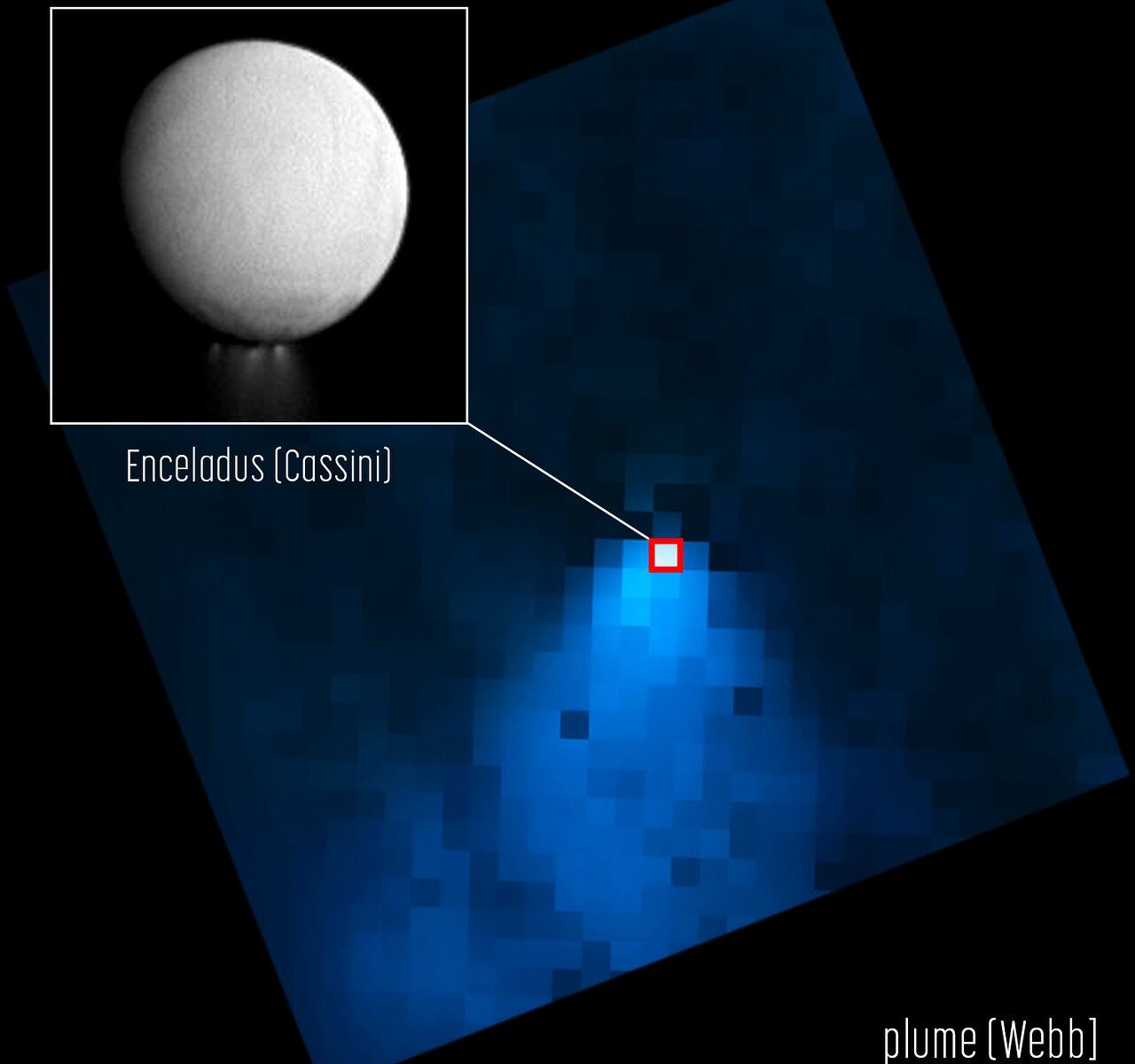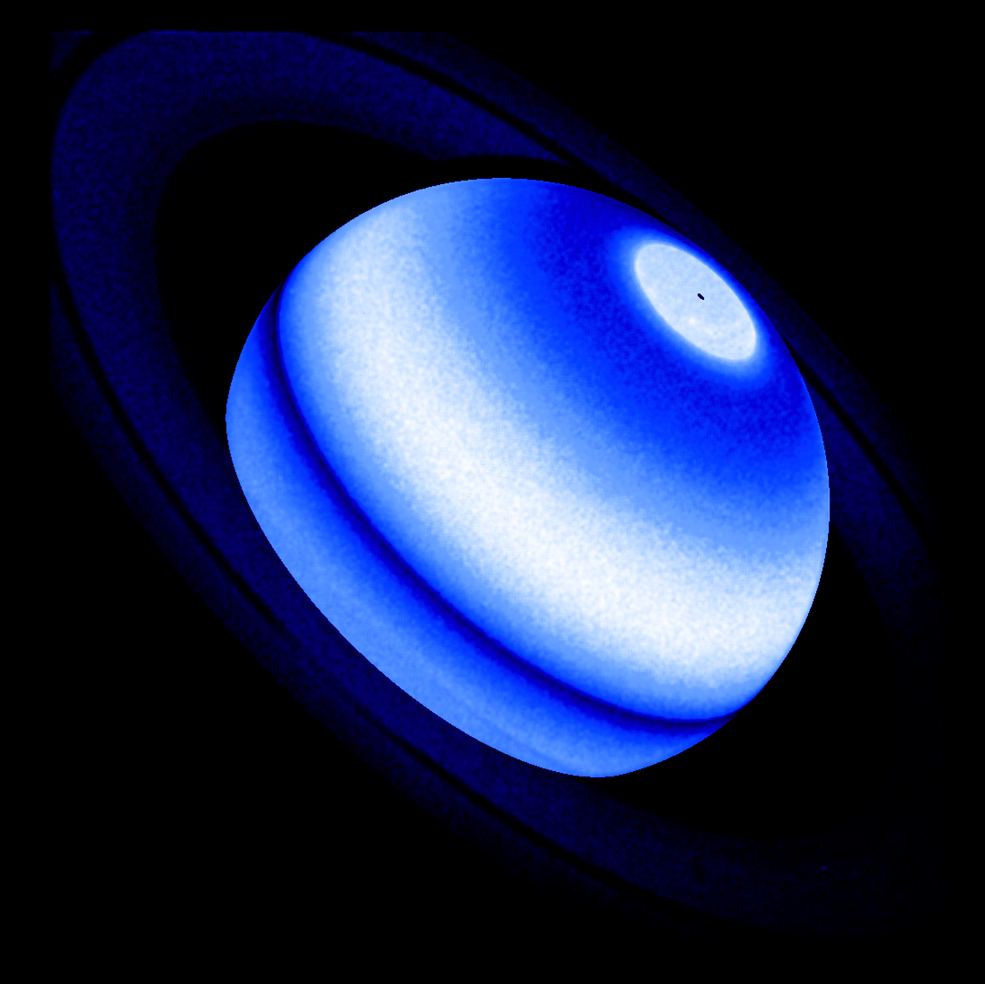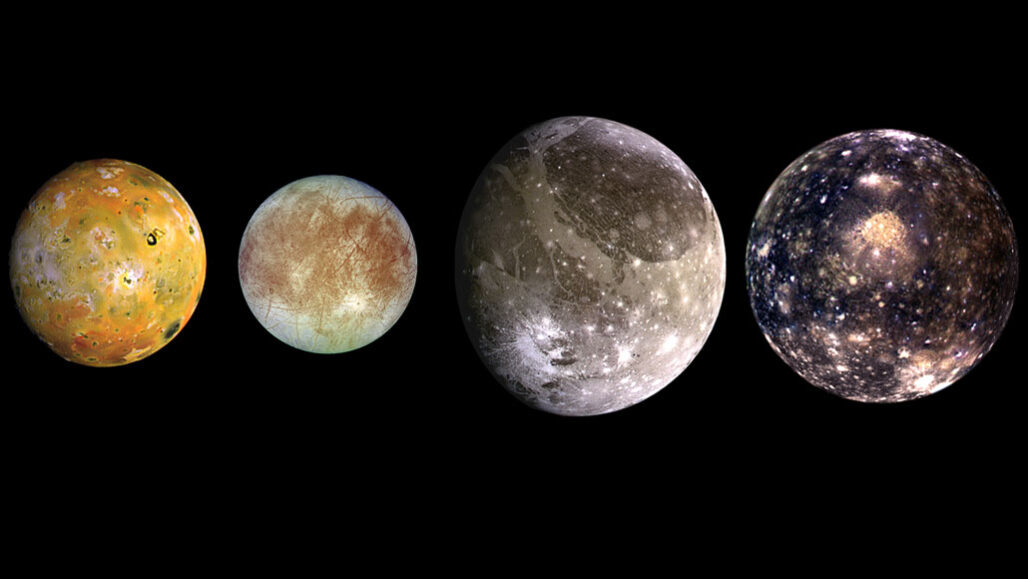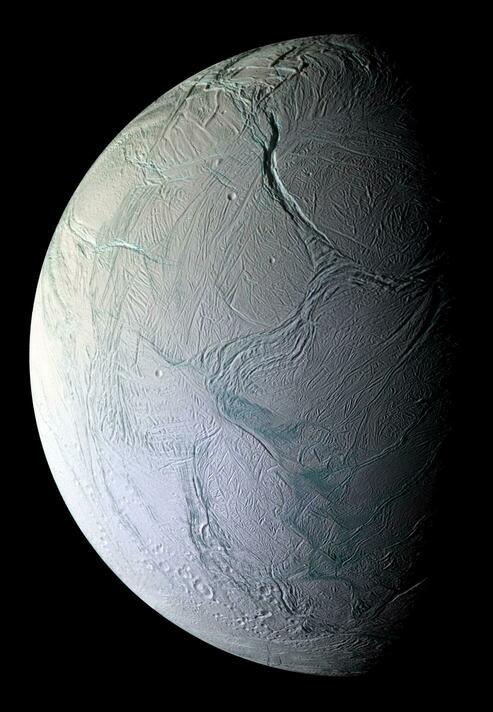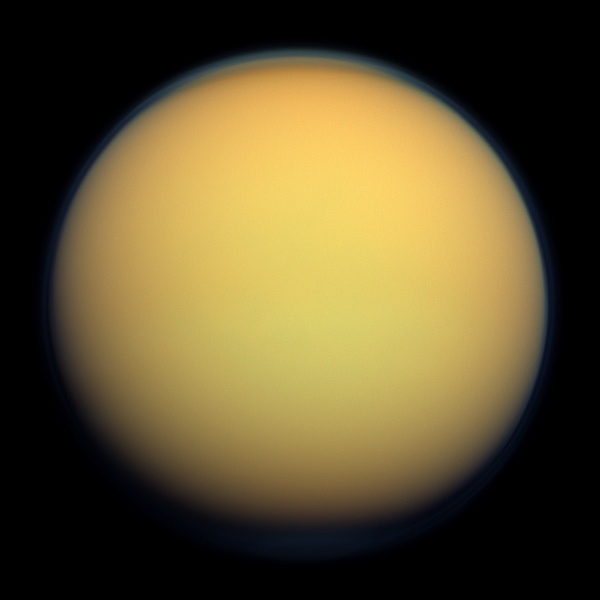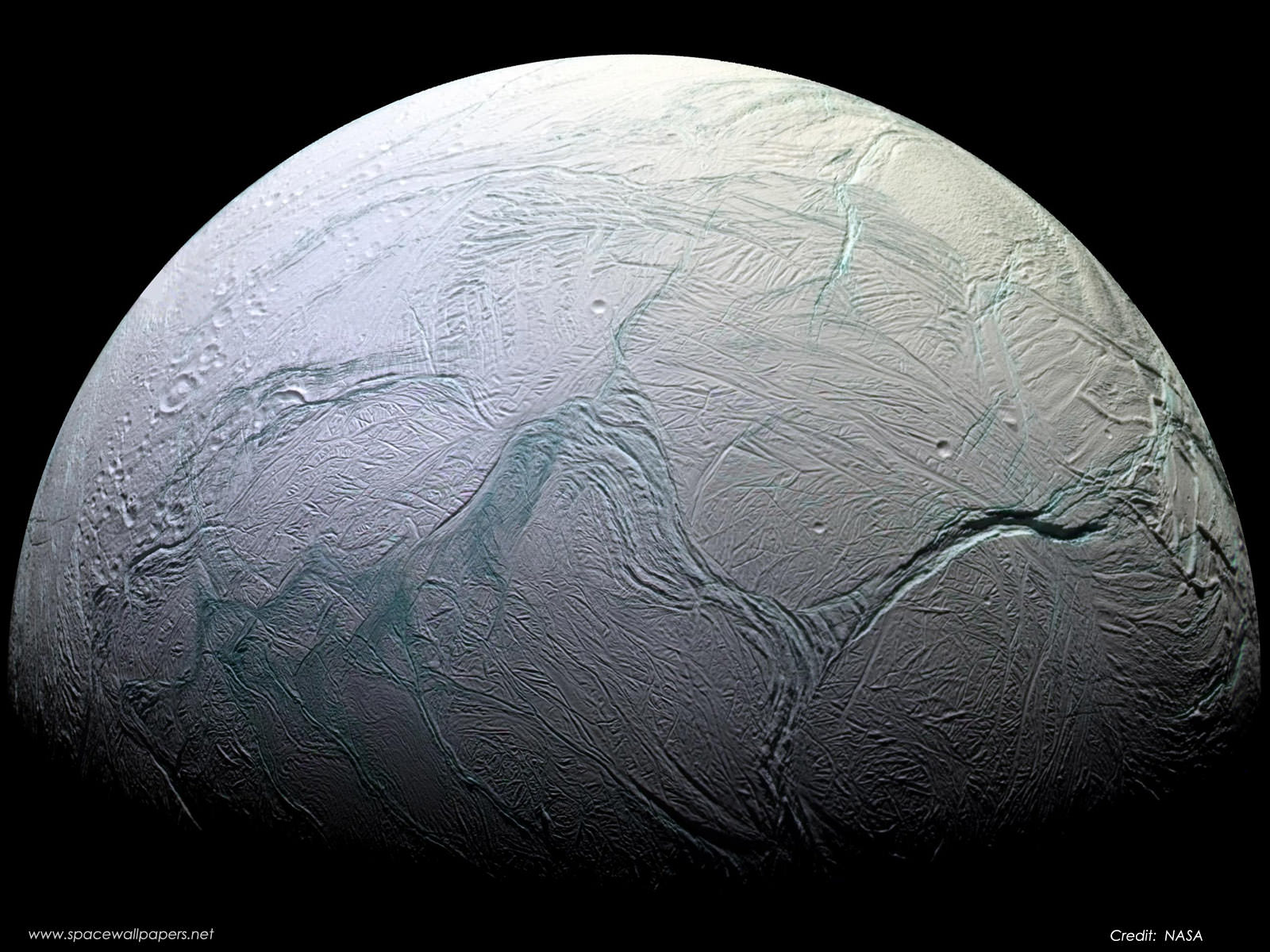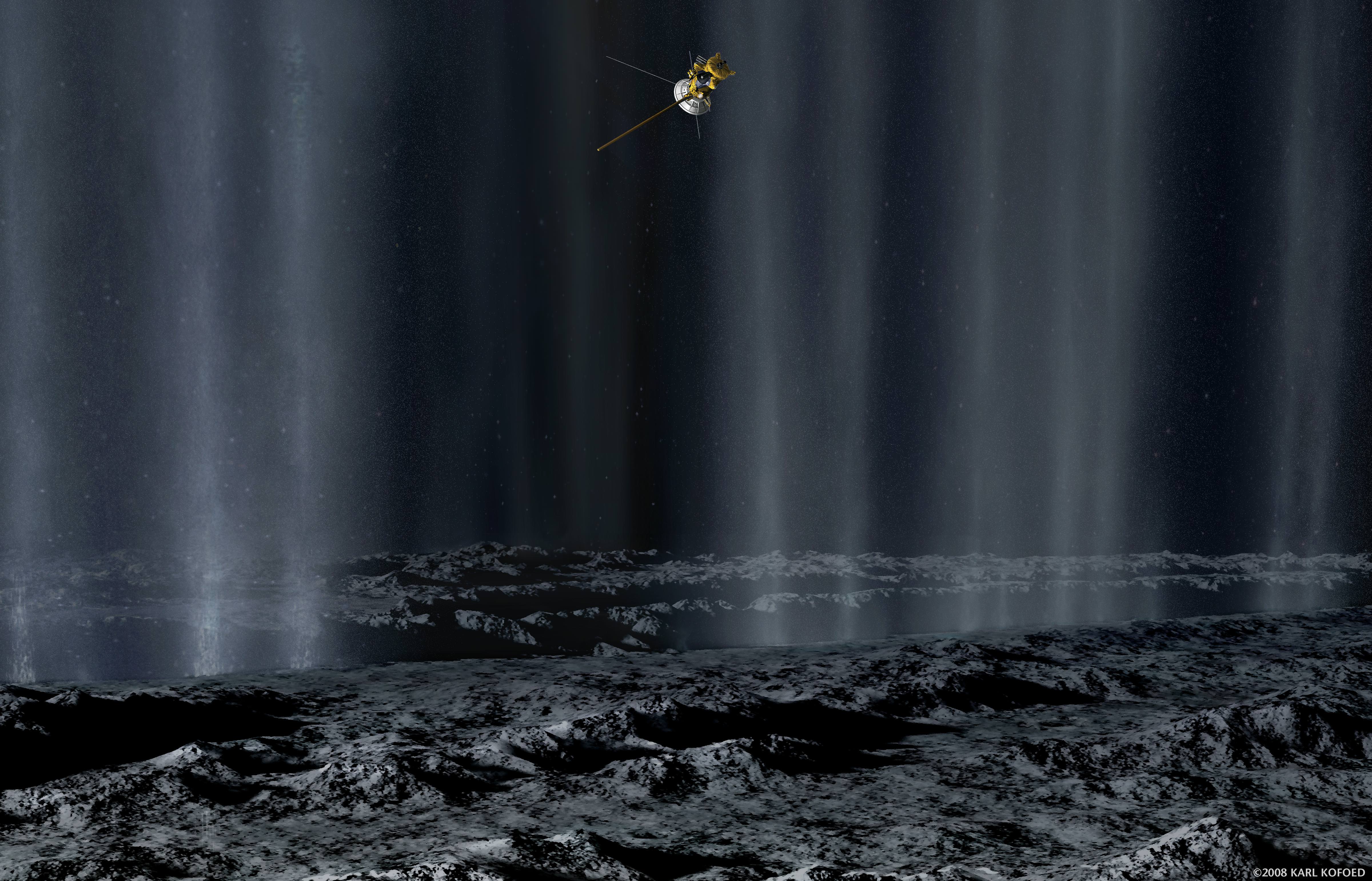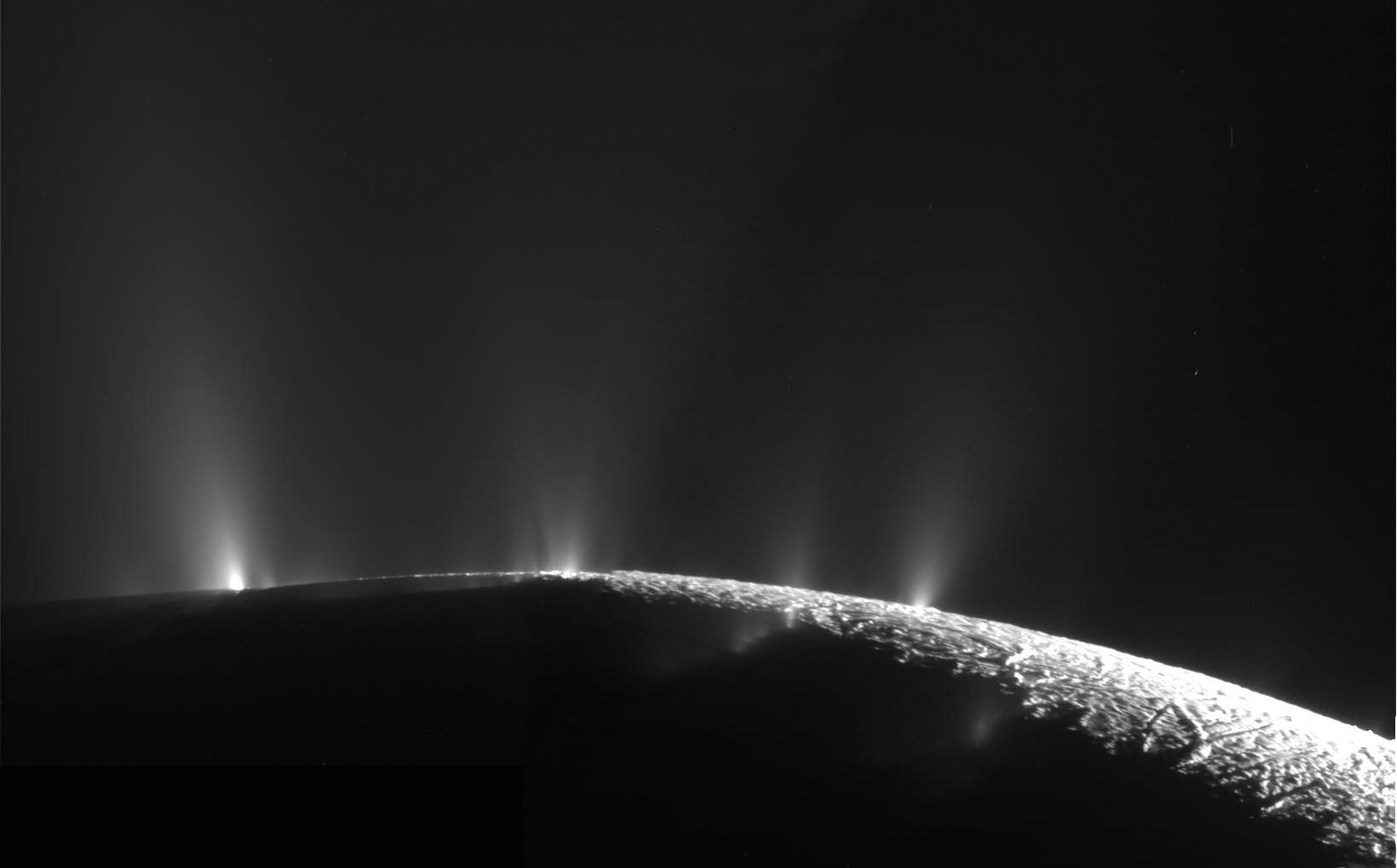The James Webb Space Telescope has observed a huge water vapor plume emanating from Saturn’s moon Enceladus. Astronomers say the plume reaches nearly 10,000 kilometers (6,200 miles) into space, which is about the equivalent distance as going from Ireland to Japan. This is the largest plume ever detected at Enceladus.
Continue reading “JWST Spies a Gigantic Water Plume at Enceladus”JWST Spies a Gigantic Water Plume at Enceladus
